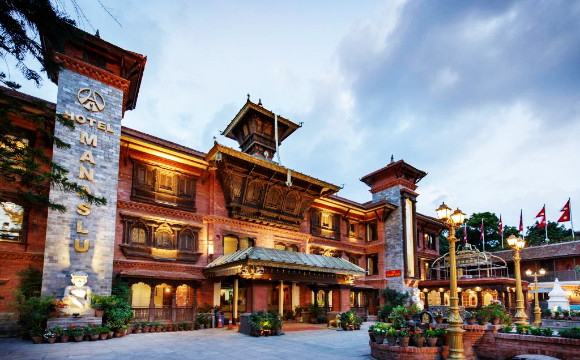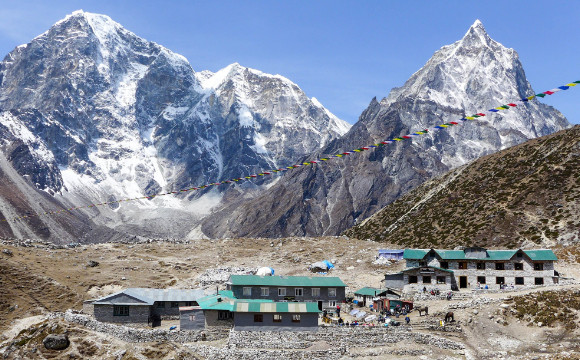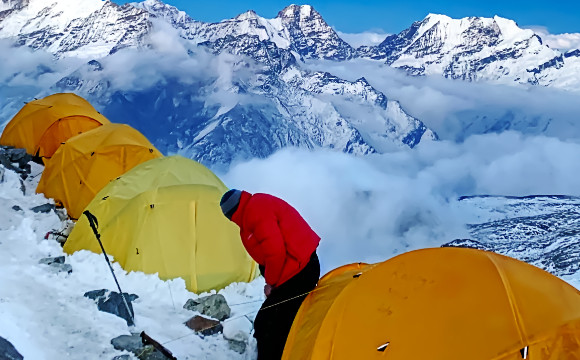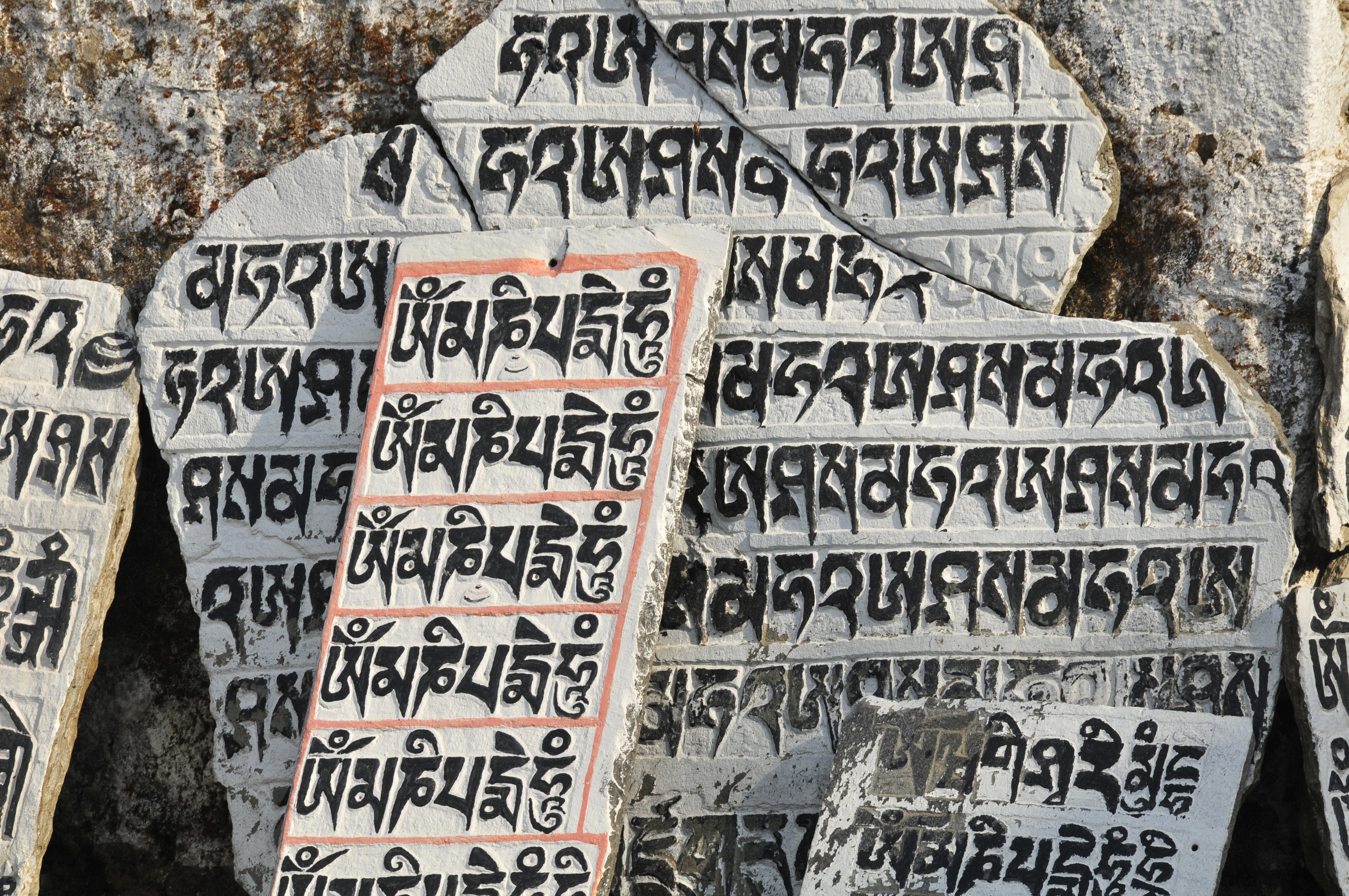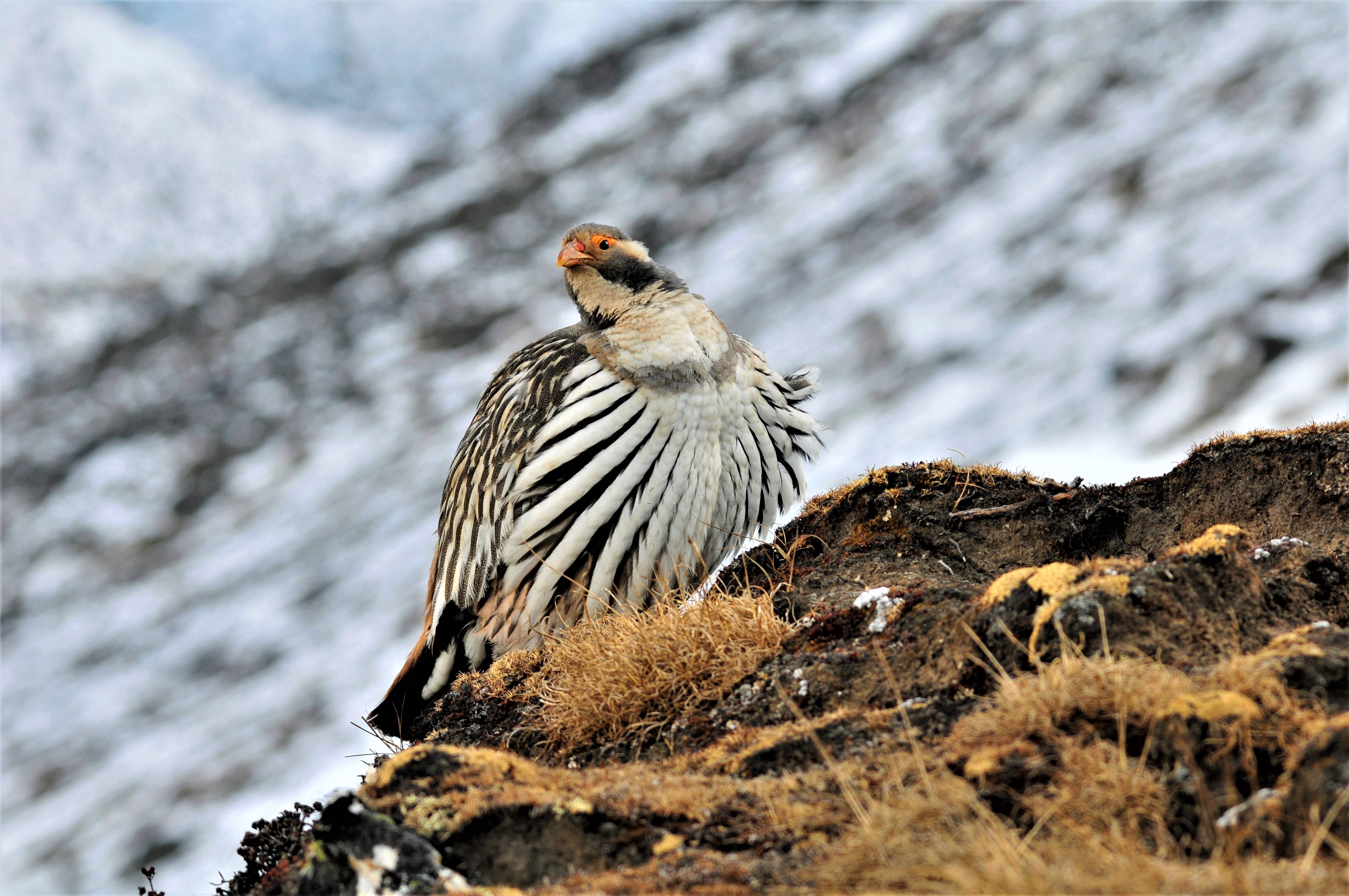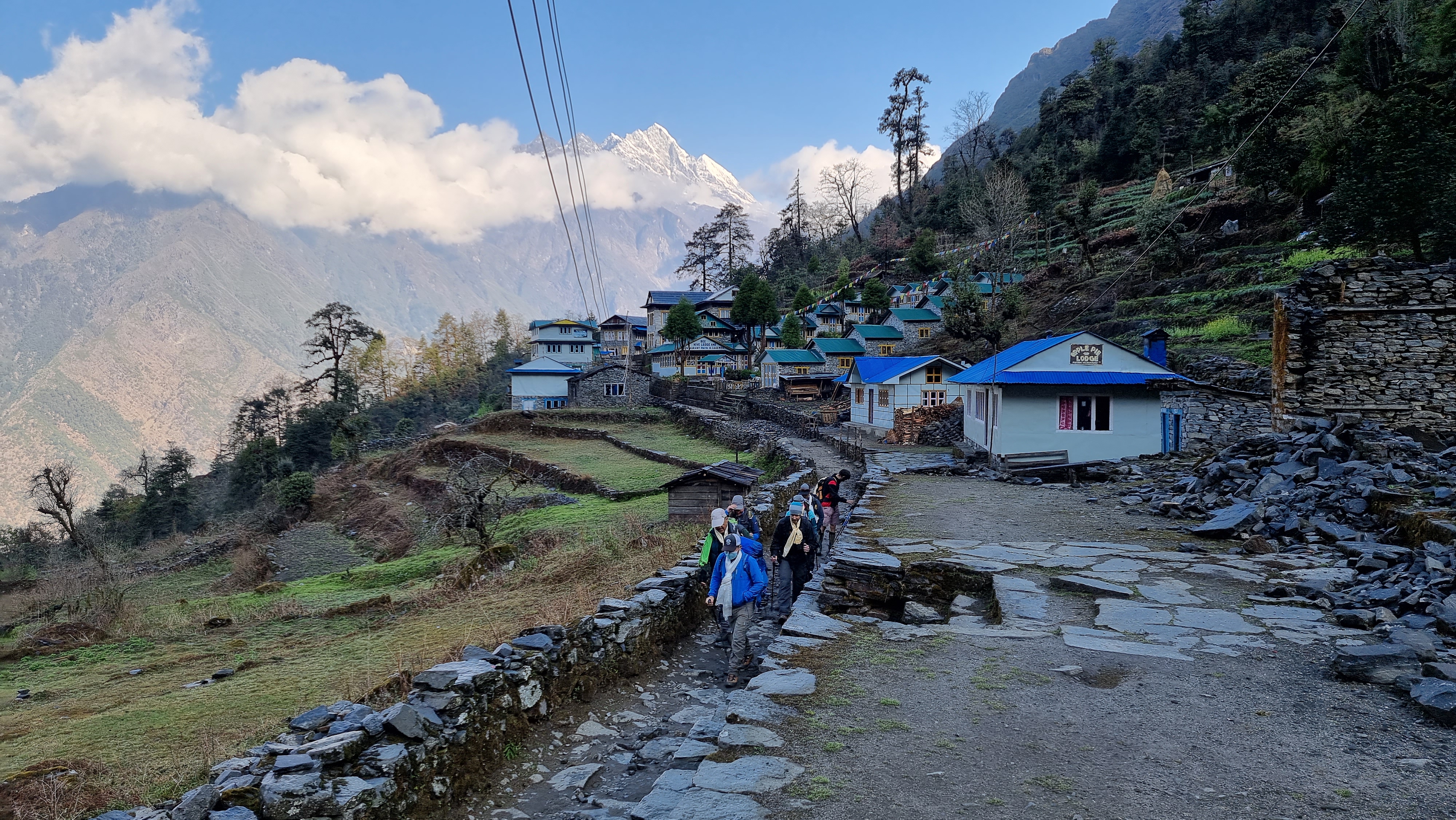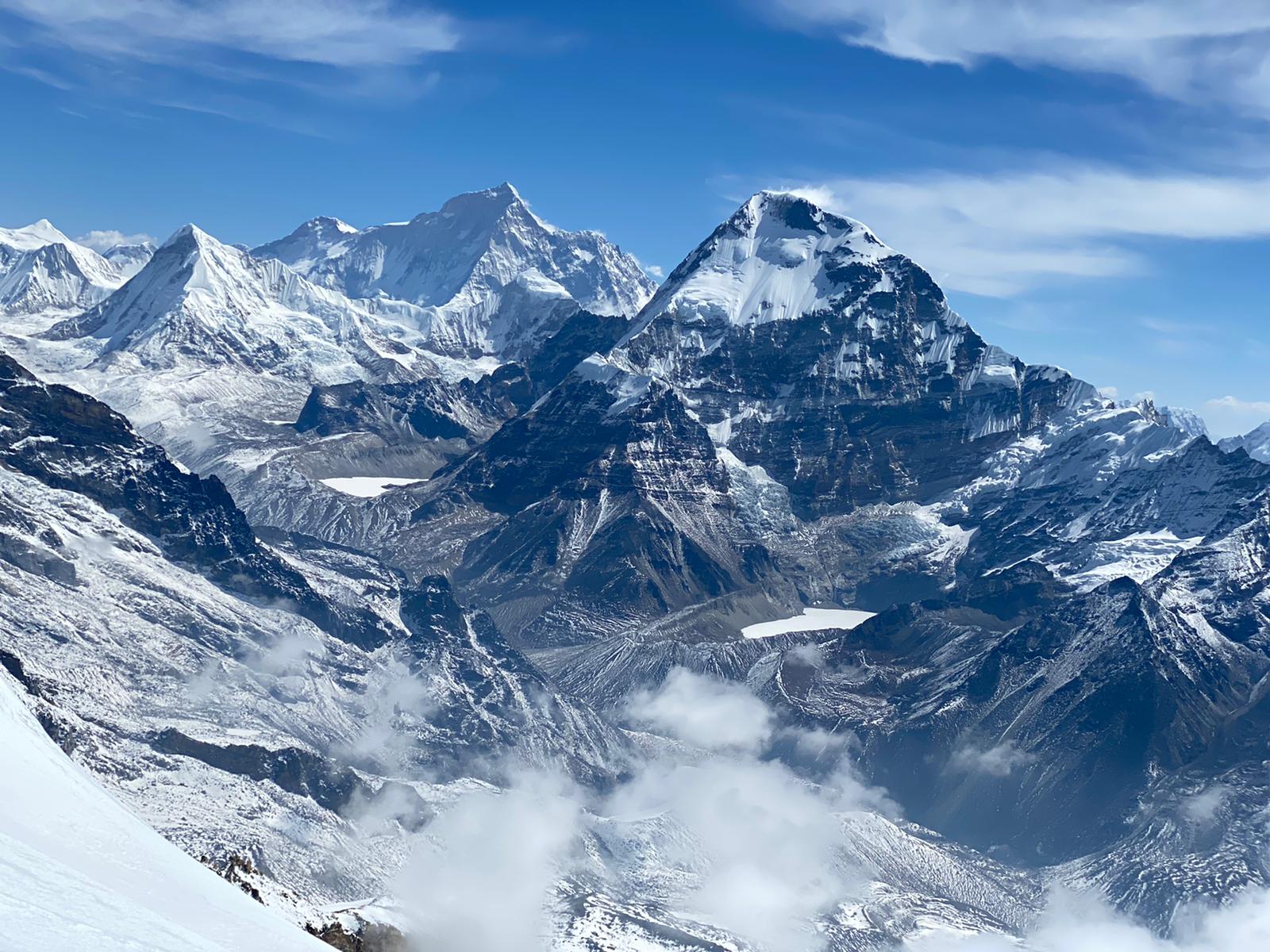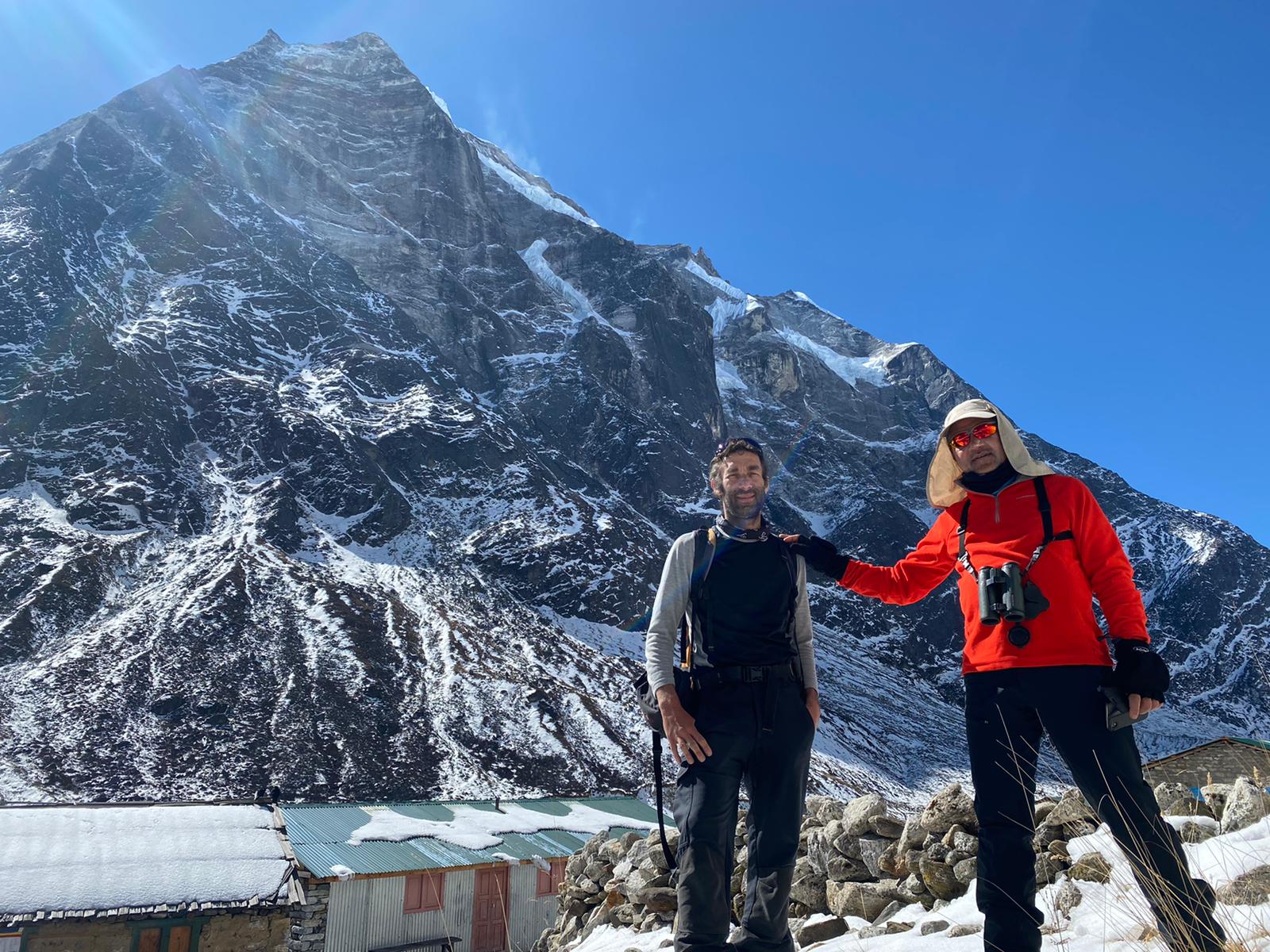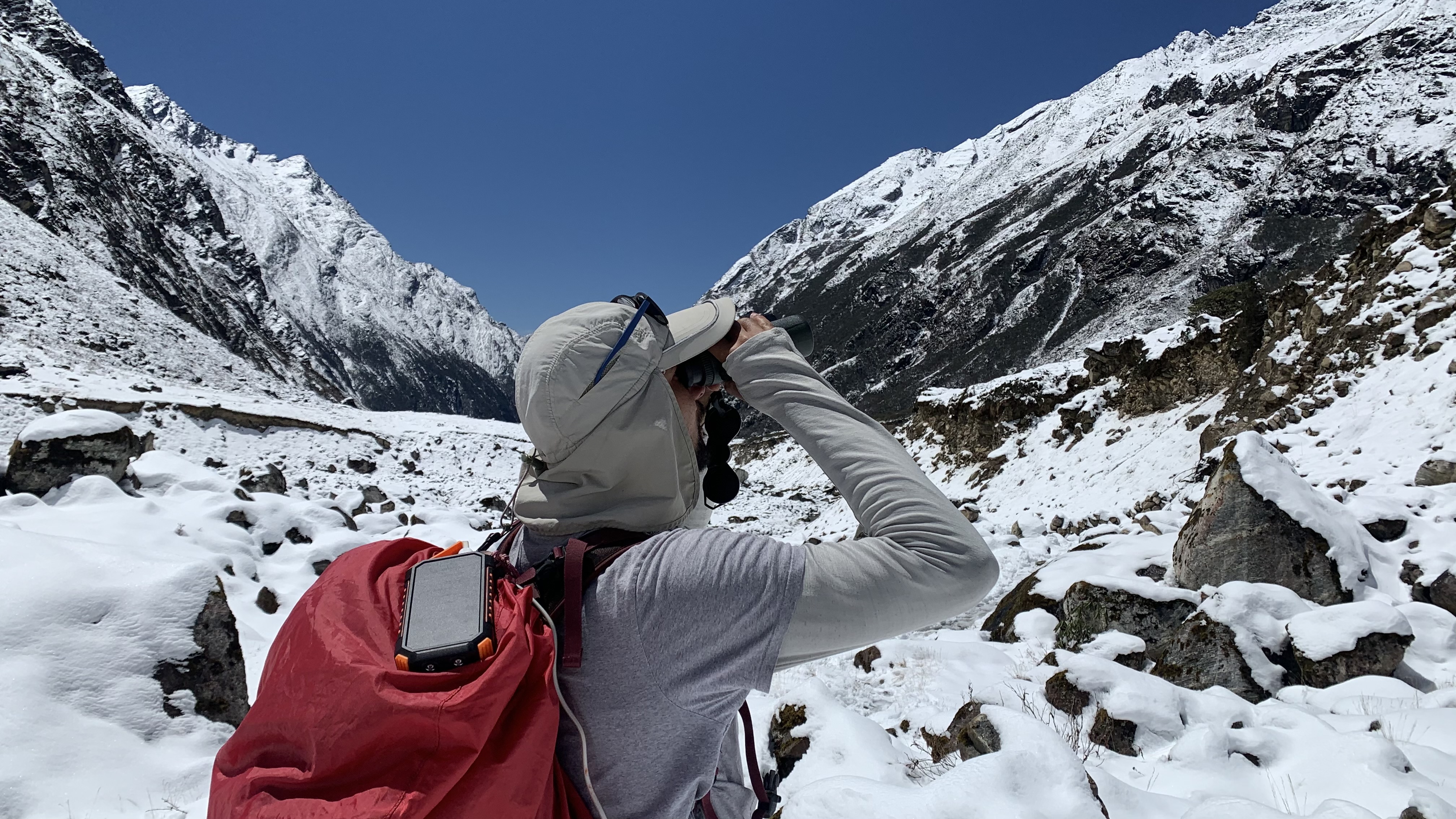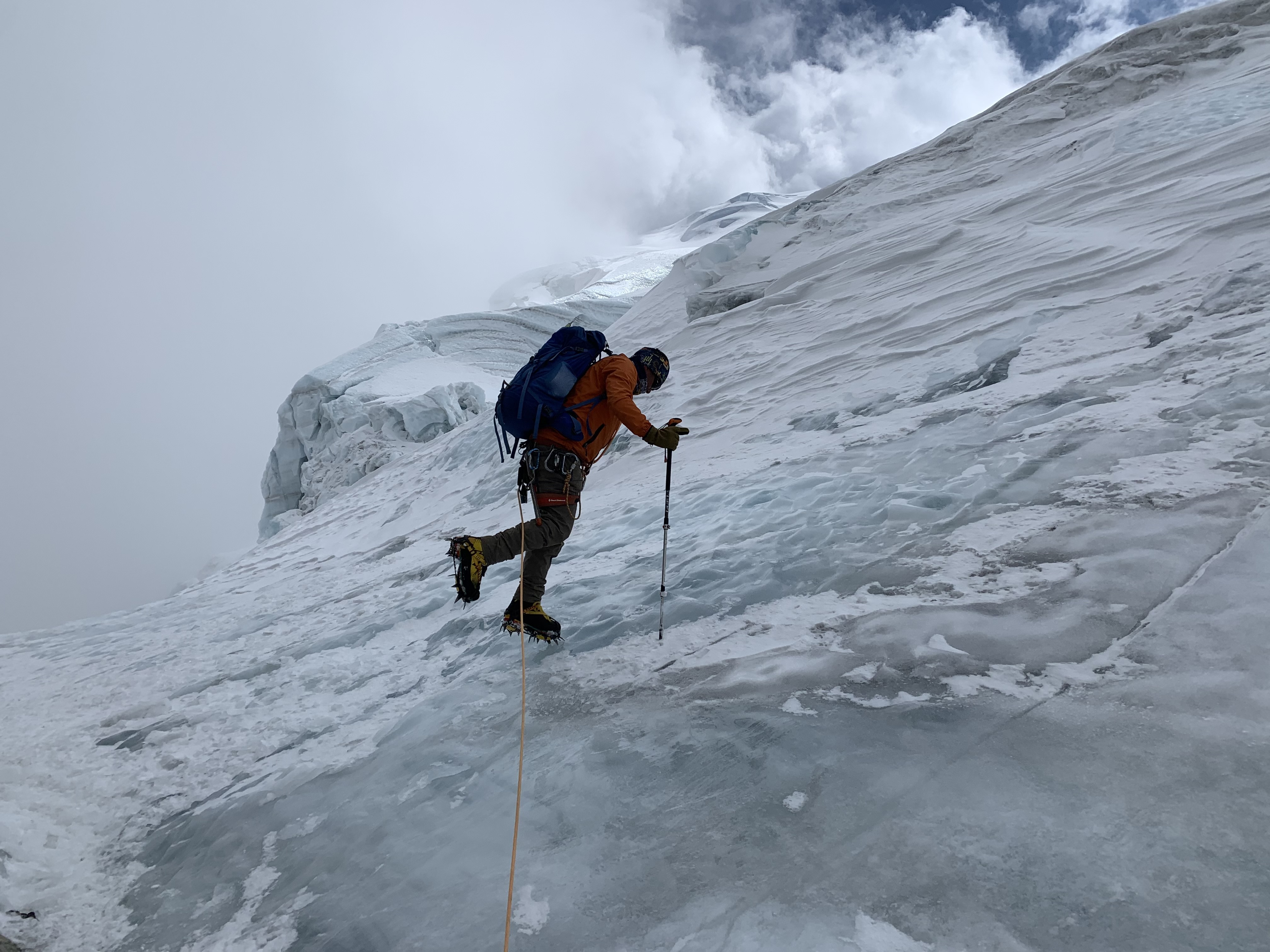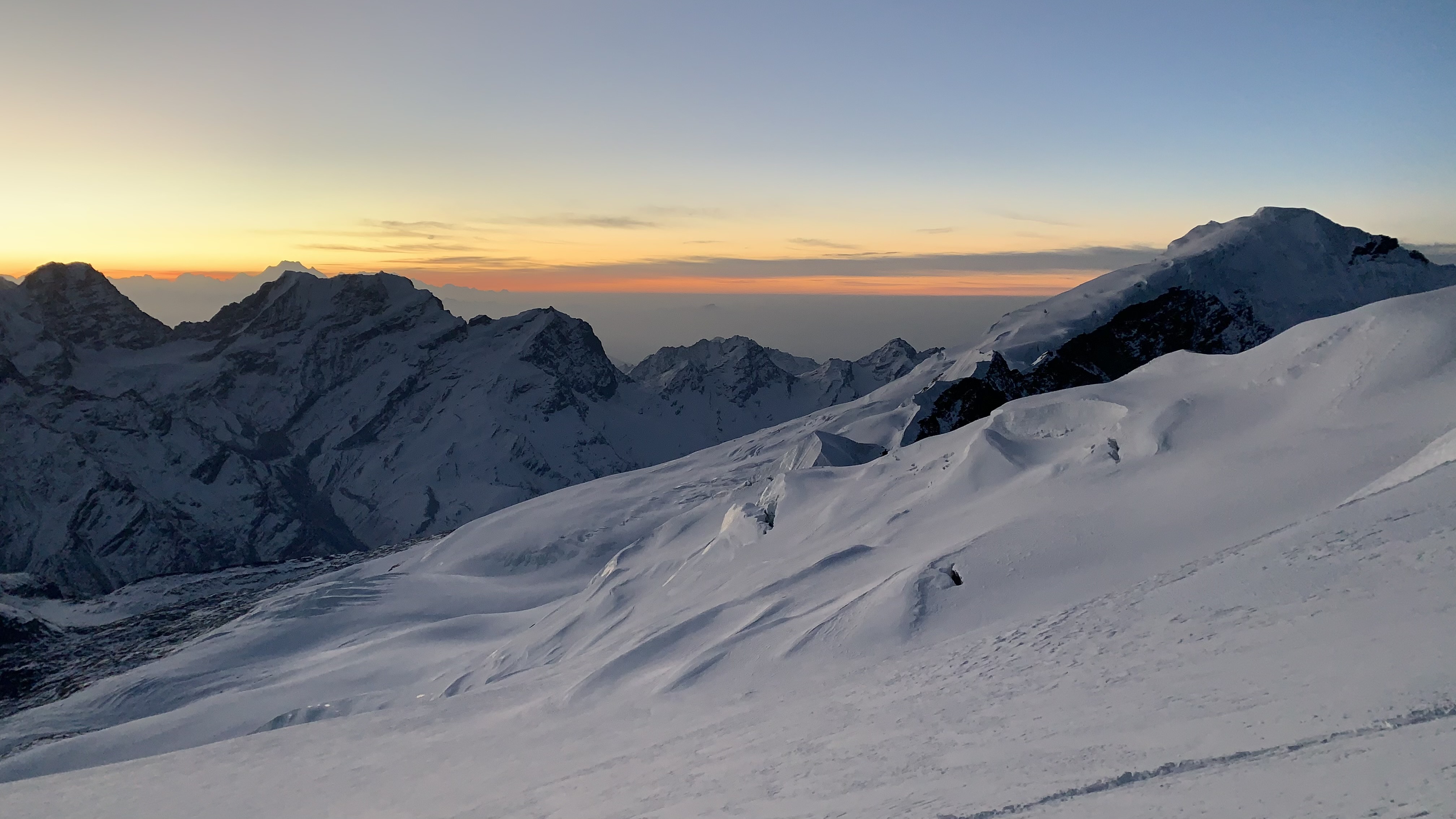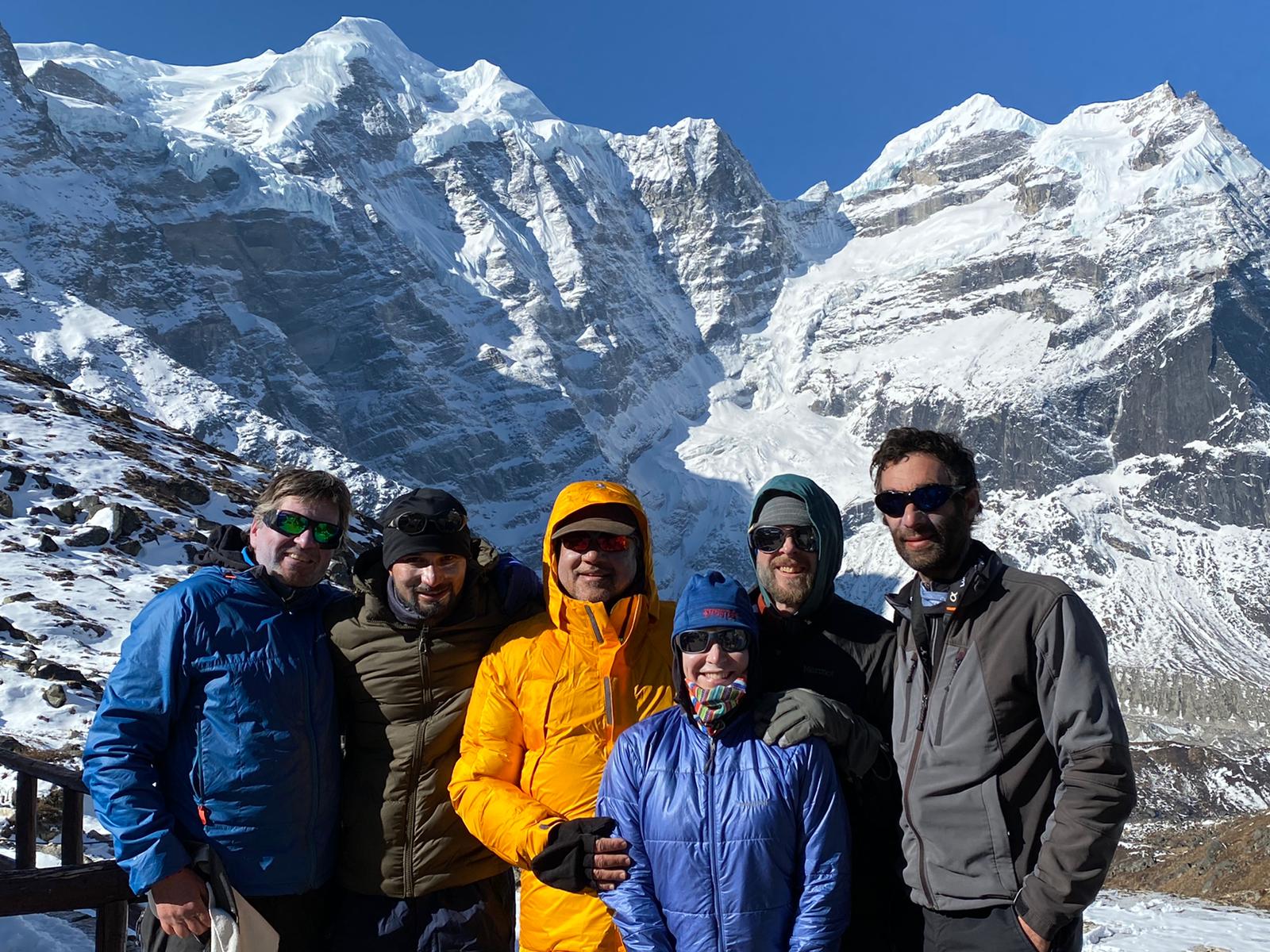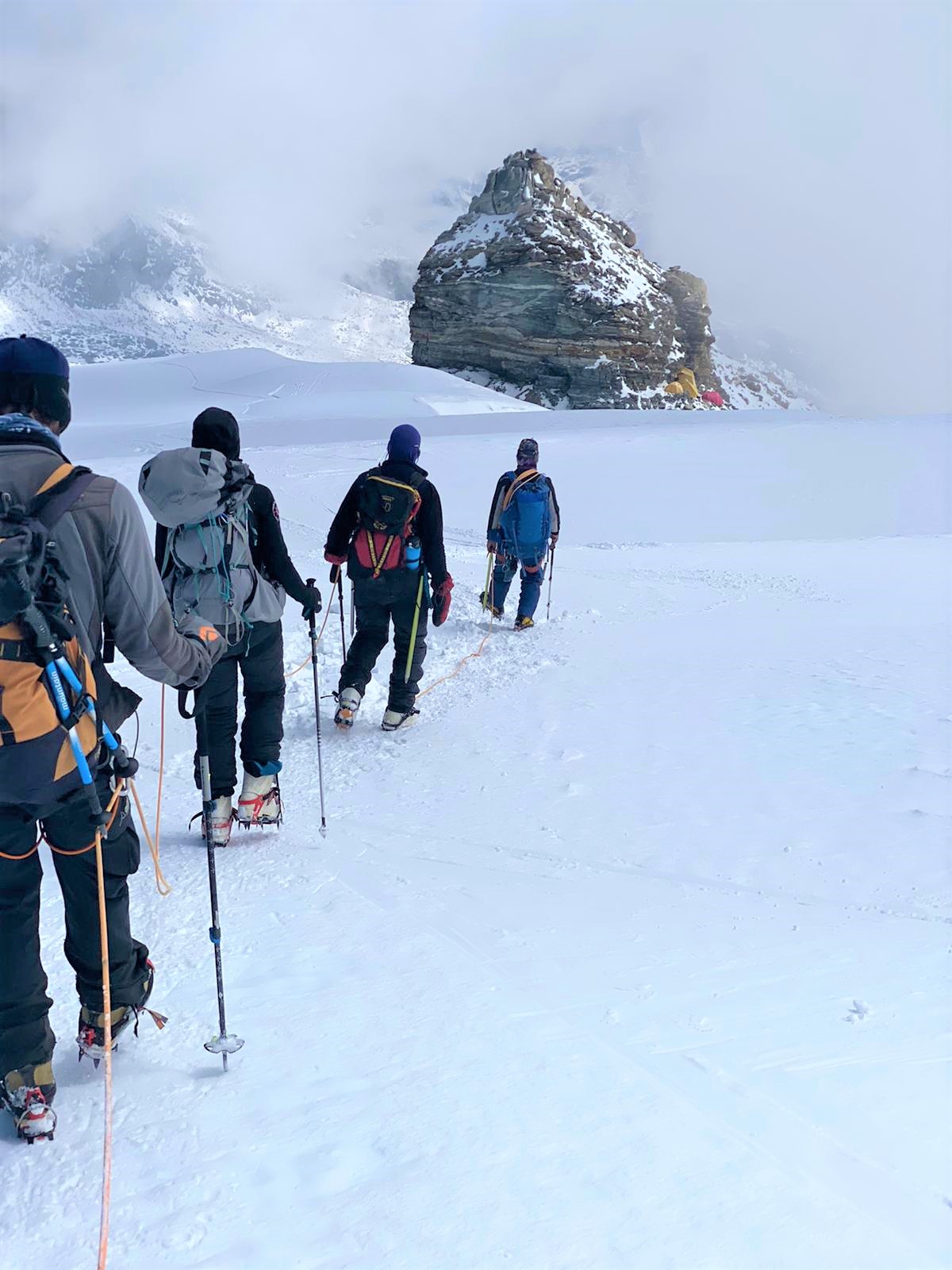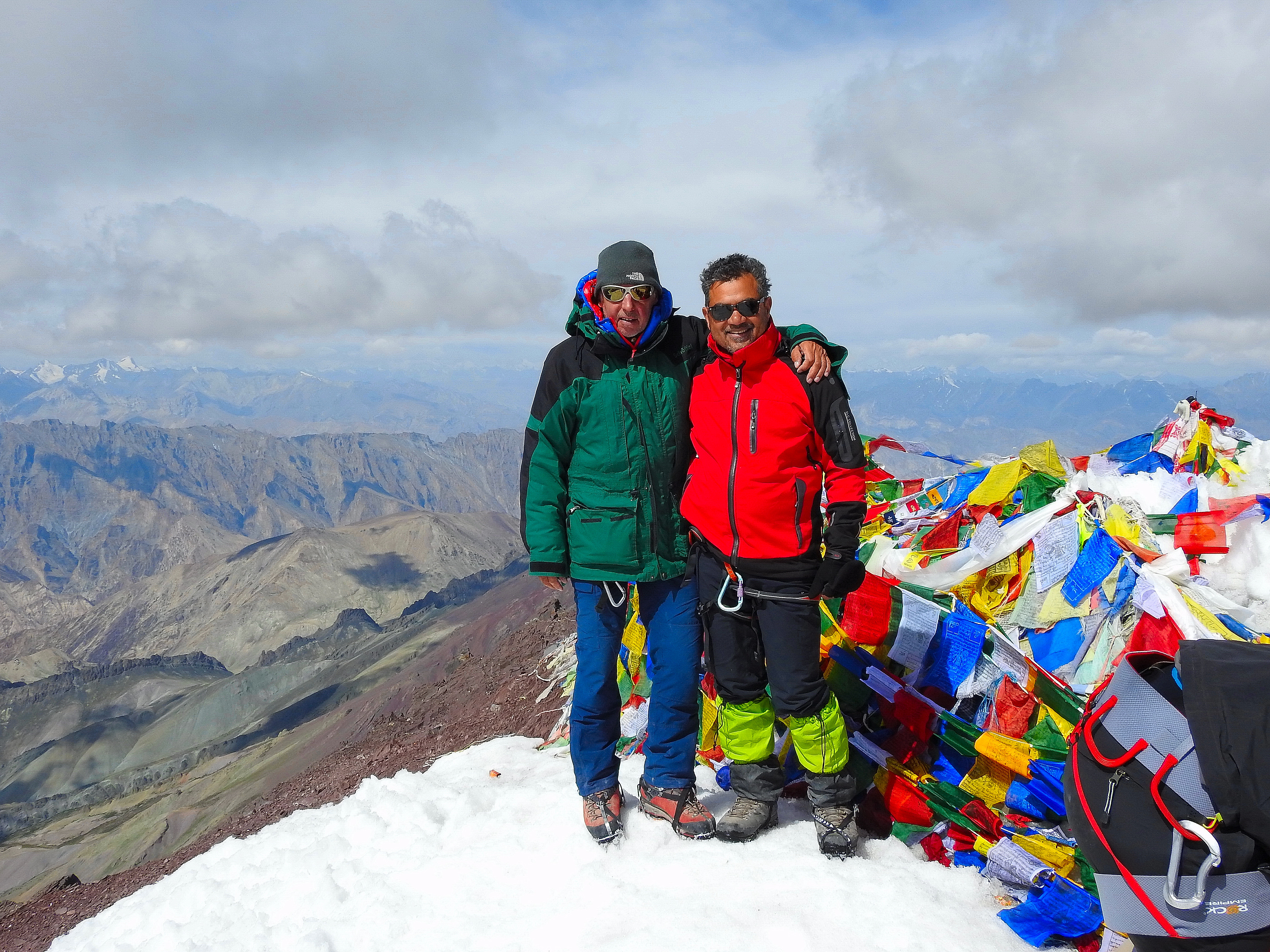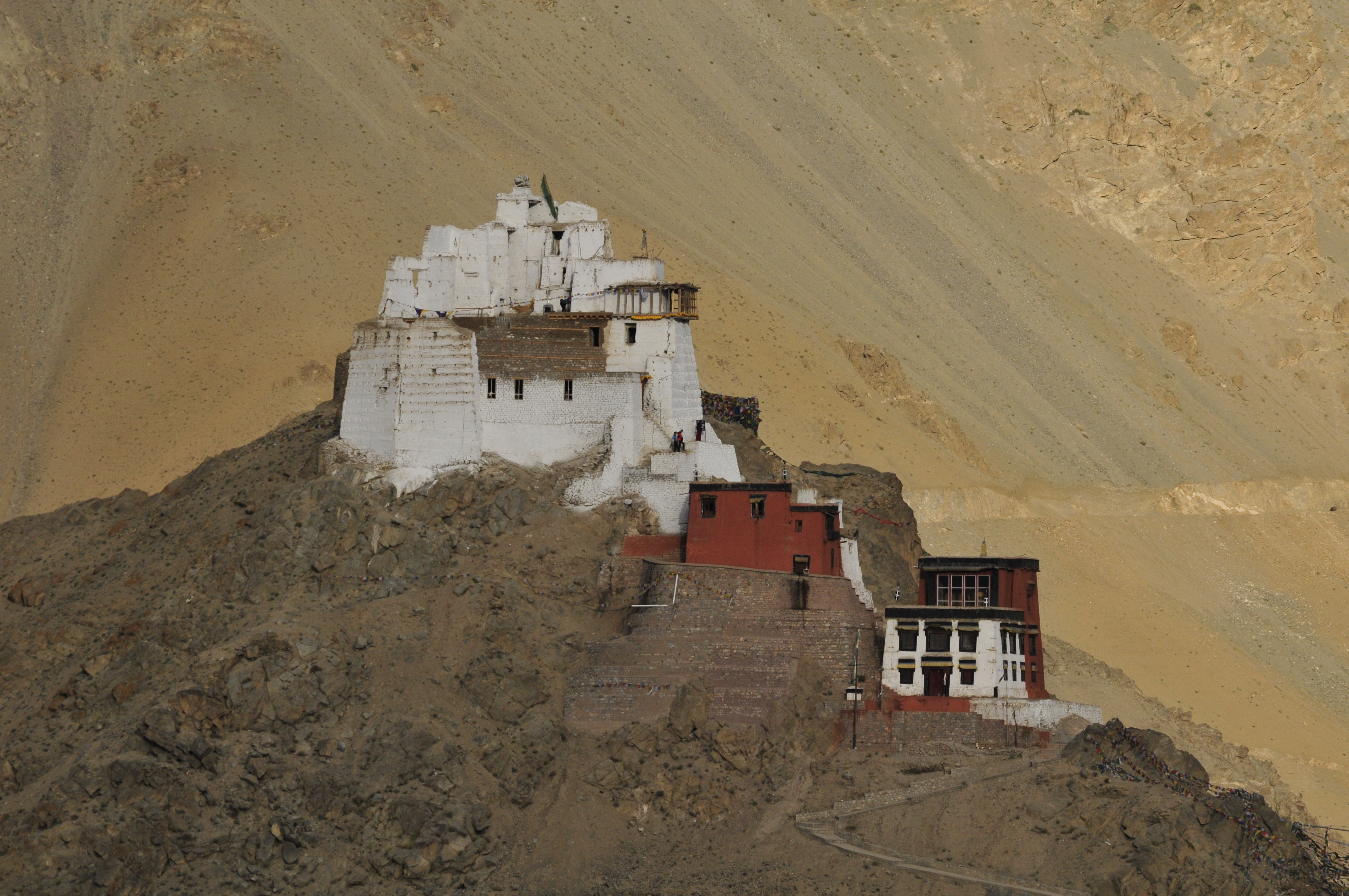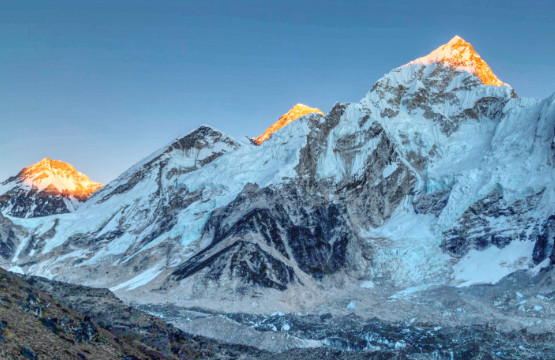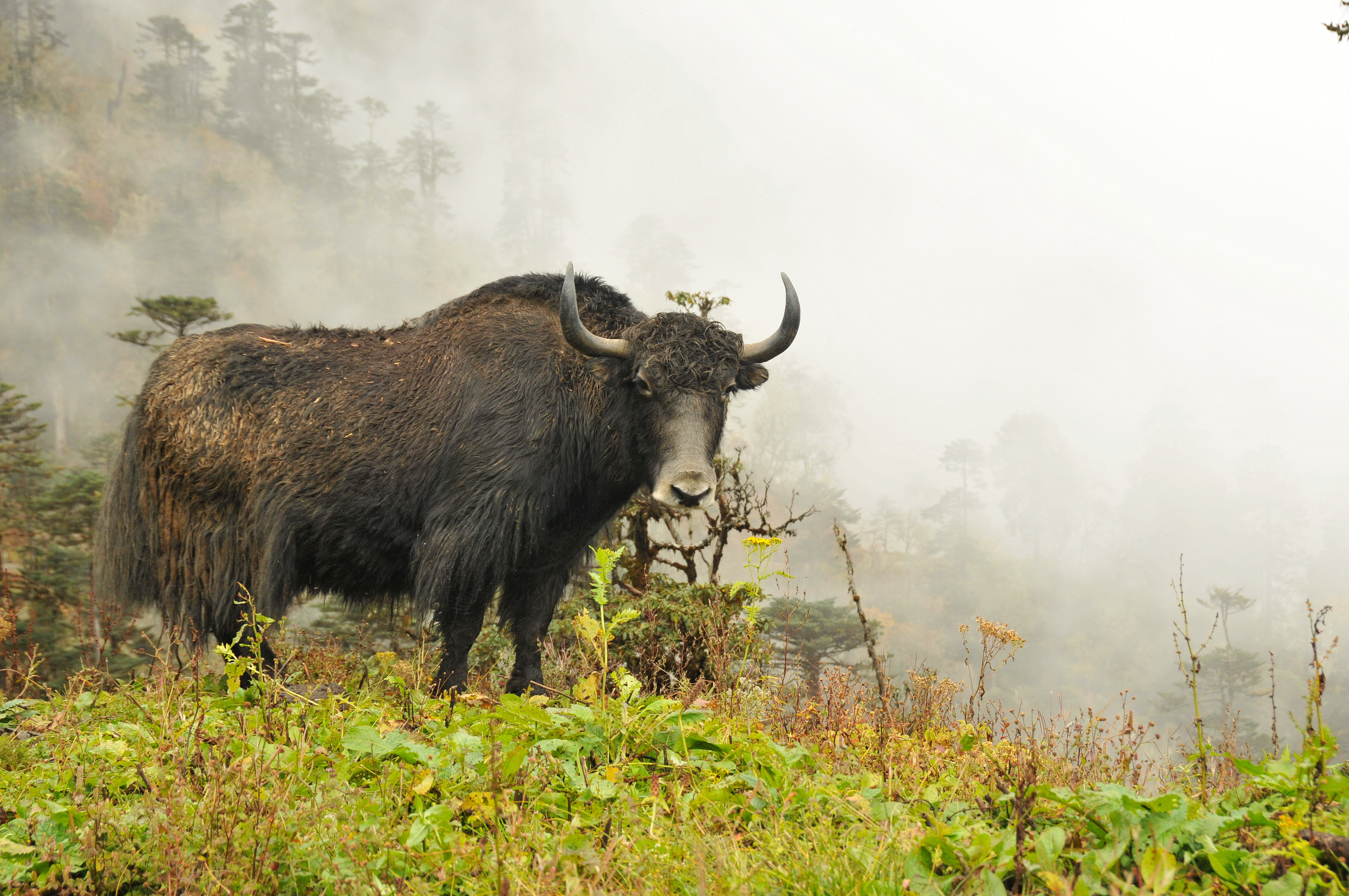Mera Peak Climbing
Highlight
- Sightseeing in the World Heritage Sites in Kathamdu Valley: Kathmandu/Patan Durbar Square
- Swayambhunath, Pashupatinath Temple and Boudhanath Stupa
- Scenic flight from Lukla
- Get acquainted with the mountain people and the Himalayan Nature
- Climb Mera peak 6,461 m/ 21,190 ft
- Enjoy the Impressive views of the world’s highest snow capped peaks, including Mt. Everest, Mt. Lhotse, Mt. Thamserku, and Mt. Amadablam, Mt. Makalu & Mt. Kanchenjunga
Trip Facts
Start & End Point
Kathmandu/Kathmandu
Duration
20 D/19 N
Best Time
Spring/Autumn
Grade
Very Strenuous
Activity
Adventure,climbing,trekking
Accomodation
Hotel/Local Lodges
Meals
19 Breakfast,14 Lunches,15 Dinner
Max. Elevation
6,461 m
Itinerary
Welcome to Nepal! Upon arrival in Him-Nat guide/representative will be at the airport to greet and take us to our hotel. Please look out for your name-card once you exit out of arrival area.
If you’re not feeling jet-lagged, take some time to explore Kathmandu’s medieval backstreets, discover temples dating back to the 16th century, make your way down to Thamel, the main tourist hub in Kathmandu and a great place to dine. There are myriads of options to choose from like New Orleans Cafe, Rum Doodle, Bear Garden etc just to name a few. Enjoy your evening and get some rest as the adventure begins tomorrow!

Accommodation
Hotel Manaslu
Meals
Breakfast
Maximum Altitude
1,324 mBoudhanath – Pashupatinath
Nepal’s capital Kathmandu is a fascinating blend of old and new and the largest and most cosmopolitan city in Nepal. This morning we visit the colossal Bodhnath (Boudha), which is one of the world’s largest stupas and the most important Buddhist monument outside Tibet. It’s a beautiful worship site where the spinning of prayer wheels, prostrating pilgrims and collective chants are just some of the practices that can be witnessed.
The Stupa is located in the area of ancient trade route to Tibet where Tibetan merchants and offered prayers for many centuries. When refugees entered Nepal from Tibet in the 1950s, many decided to live around Bodhnath. Hence, a complete township has developed around Bodhnath and we’ll also visit a monastery where the young monks live and study Tibetan Buddhism.
Next we will visit Pashupatinath (UNESCO Heritage site) – one of most important Hindu pilgrimages in the world and its sacred temple complex on the banks of the holy Bagmati river. Here, monkeys run up and down the steps of the burning ghats (cremation), and trident-bearing Saddhus draped in burnt-orange and saffron sit serenely meditating – when they’re not posing for photos-for-rupees.
At first glance, Pashupatinath might not look that sacred – the temple is just a few hundred meters from the end of the runway at Tribhuvan Airport, overlooking the Bagmati river. However, in religious terms this is a powerhouse of Hindu spiritual energy, and is closely connected to Lord Shiva in the form of Pashupati, the Lord of Animals.
The practice of cremation in Nepal at Pashupatinath dates back to centuries. Arya Ghat, the place where the crematorium lies on the Bagmati river is the largest cremation area in Nepal.
Afternoon is at leisure.
Note: We host a pre-trip meeting at your hotel and introduce your trek leader/guide. Please seek this opportunity to ask questions about your trek and climbing. For the meeting, please make sure you bring your passport, three copies of passport-size photos, and a readable copy of your travel insurance policy.

Accommodation
Hotel Manaslu
Meals
Breakfast
Maximum Altitude
1,324 mSwayambhunath – Patan Durbar Square
This morning we start our half-day sightseeing tour first by visiting Swayambhunath, UNESCO site commonly known as the “Monkey Temple” which lies atop forested hill some 3 km from Thamel, tourist hub of Kathmandu, which was built over 2500 years ago. From here we enjoy panoramic views of Kathmandu, stretching out the foothills of the Himalaya.
Our next stop is the nearby city of Patan, a renowned center of Nepalese arts and crafts. Patan was founded in 250AD and became known for producing fine works in copper, bronze and silver. You see many of these treasures on display at the new Patan Museum. If time permits, you head to the nearby Tibetan refugee camp for a demonstration in carpet weaving.

Accommodation
Hotel Manaslu
Meals
Breakfast
Maximum Altitude
1,324 mEarly in the morning our Trekking Guide will pick us up at the hotel and transfer to Kathmandu airport domestic terminal to catch flight to Lukla (2,810 m). The flight duration is approximately 45 minutes. After landing at the Tenzing-Hillary airport in Lukla we refresh with a cup of Masala tea or coffee, meet rest of our the trekking team (porters), then our trekking starts from Lukla to Painyan. We walk on a forest trail, cross a bridge over the Handi Khola and reach Surke Village. From here we continue moving south and cross the Chutok La pass before reaching the small settlement of Paiyan, also known as Chutok. Overnight in Paiyan.

Accommodation
Lodge/Guesthouse
Meals
Breakfast, Lunch, Dinner
Maximum Altitude
2,730 m/8,956 ftWe descend for a while and reach a small bridge. From here the trail is slippery until we cross the Kari La pass. We walk through rhododendron and bamboo forests on a narrow mountain trail. On today’s trip we also get to be in awe of the Dudhkoshi Valley. We continue our trek to Panggom Village whose settlers are dependent on farming and trading. Overnight in Panggom.

Accommodation
Lodge/Guesthouse
Meals
Breakfast, Lunch, Dinner
Maximum Altitude
2,846 m/9,337 ftWe begin our trek after breakfast. After trekking out of Panggom, we cross the Panggom La pass. Then we ascend, walk on a steady path and turn north. We cross Peseng Kharka Khola first then after walking for some time, reach Peeng Kharka Danda. We cross Ningsow Khola (stream) before reaching the Ningsow Village. Overnight in Ningsow.

Accommodation
Lodge/Guesthouse
Meals
Breakfast, Lunch, Dinner
Maximum Altitude
2,863 m/9,393 ftFrom Ningsow, we climb first then descend for a while and climb some more to reach Ramailo Danda. From here we get extraordinary views of Mera Peak and Salpa. After ascending and descending on our trail, we enter the Makalu Barun National Park. Our trail from here to Chhatra Khola is called Pasang Lhamu trail.
On the way, if we are lucky, we might even come across the elusive Red Panda and many exotic flora & birds, including the rare himalayan pheasants. Overnight in Chhatra Khola.

Accommodation
Lodge/Guesthouse
Meals
Breakfast, Lunch, Dinner
Maximum Altitude
2,800 m/9,186 ftWe walk towards the north on the main trail to Mera Peak. After walking on a trail next to the the Majang Khola, we merge with another trail which moves alongside the Hinku Khola. Our trail moves straight ahead towards Tashing Ongma which has seasonal tea shops. We continue our trek and cross the bridge over the Sanu Khola before reaching Kothe. Overnight in Kothe.

Accommodation
Lodge/Guesthouse
Meals
Breakfast, Lunch, Dinner
Maximum Altitude
3,691 m/12,109 ftWe continue along the ridge of the Hinku Khola in the shadow of Mera Peak. We take lunch at Gondishung,the summer herders' settlement in the west bank of the Hinku Drangka. Beyond Gondishung, we pass a 200-year-old Lungsumgba Gompa, where we can find Mera Peak scripted in rock along with its route to reach Mera. A short walk takes us to Thaknak, which is a summer grazing area with primitive lodges and shops. Overnight in Thaknak.

Accommodation
Lodge/Guesthouse
Meals
Breakfast, Lunch, Dinner
Maximum Altitude
Leaving Thaknak, we follow the lateral moraine of Dig Glacier to Dig Kharka, which offers spectacular views of Charpate Himal. The trail climbs through moraines to the snout of the Hinku Nup and Shar glaciers, and then climbs more steeply to Khare. From here, we can see the northern face of Mera Peak which will be an amazing experience. After lunch we can hike in and around Khare. Overnight at Khare.

Accommodation
Lodge/Guesthouse
Meals
Breakfast, Lunch, Dinner
Maximum Altitude
5,045 m/16,486 ftWe have a separate day set aside solely for acclimatization and basic training just to prepare ourselves better for the Mera Peak climb. Our climbing leader will help us polish our basic climbing techniques and demonstrate the best ways to use our climbing gears like the ice axe, harness, ascender climbing boots, and crampons. The training will also include learning the best climbing technique with the rope. Overnight in Khare.

Accommodation
Lodge/Guesthouse
Meals
Breakfast, Lunch, Dinner
Maximum Altitude
5,045 m/16,486 ftWe walk through a boulder-strewn course on a steep trail to reach the Mera Peak Base Camp. From here, we continue further through the Mera La pass to reach the Mera High Camp. Our path is along a rocky trail, which can be hazardous if it has recently snowed, as there are a number of crevasses here. We make our way to the top of the rock band, which is marked by a large cairn. Then we set up a high camp while enjoying excellent views of Mt. Everest, Makalu, Cho Oyu, the south face of Lhotse, Nuptse, Chamlang and Baruntse. Overnight at Mera High Camp.

Accommodation
Lodge/Guesthouse
Meals
Breakfast, Lunch, Dinner
Maximum Altitude
5,780 m/18,958 ftThis is a really important day of this expedition. We wake up around 2 am in the morning for breakfast. It’s going to be very cold in the beginning but soon we warm up as we continue climbing up the glacier and onto a peculiar ridge. The first rays of the sun hit the big peaks in an amazing red glow. The route is still non-technical as we slowly climb higher into the ever-thinning air. The slope steepens for a section behind the ridge and the summit comes back into view. At the foot of the final steep summit cone, we may use a fixed rope if the climbing leader believes it’s required. The summit is only a few meters away. From the summit, we take in spectacular views of the mighty Himalayas including Mt. Everest (8,848 m), Cho-Oyu (8,210 m), Lhotse (8,516 m), Makalu (8,463 m), Kangchenjunga (8,586m), Nuptse (7,855 m), Chamlang (7,319 m), Baruntse (7,129 m) and others. Later, we retrace our steps back to the high camp where we rest for a while before descending to Khare. Overnight in Khare.

Accommodation
Lodge/Guesthouse
Meals
Breakfast, Lunch, Dinner
Maximum Altitude
6,461 m/21,1907 ftThere is no guarantee that we will have favourable weather on our planned day for the summit. Therefore, this day is set aside as a contingency in case we are unable to summit the Mera on the desired day due to bad weather conditions or any other unanticipated reason. However, if the trip goes smoothly, this day will not be required.

Accommodation
Lodge/Guesthouse
Meals
Breakfast, Lunch, Dinner
Maximum Altitude
We retrace our steps from Khare to Kothe along the same trail. Overnight in Kothe.

Accommodation
Lodge/Guesthouse
Meals
Breakfast, Lunch, Dinner
Maximum Altitude
3600 m/11808 ftWe begin our trek to Thuli Kharka after breakfast. We climb up and descend, cross several tributaries of the Inkhu Khola before reaching a forked trail nearby Taktho. We choose the trail on our right and continue walking. Our trail passes by a Chorten after which we walk downhill on a steep trail. Next, we ascend to Thuli Kharka and pass by another Chorten on the way. Overnight in Thuli Kharka.

Accommodation
Lodge/Guesthouse
Meals
Breakfast, Lunch, Dinner
Maximum Altitude
4,300 m/14,107ftToday, we cross the Zatrwa-La Ppass at 4,600. As soon as we cross the pass, we are welcomed by the sight of the beautiful Lukla Valley which is surrounded by Cho Oyu, Kongde Peak, Numbur Himal, Kusum Khangru and other Himalayan peaks. From Zatrwa La pass we descend all the way to Chutang and then straight forward to the Lukla village. Overnight in Lukla.

Accommodation
Lodge/Guesthouse
Meals
Breakfast, Lunch, Dinner
Maximum Altitude
2,860 meters/9,383 ftWe catch an early morning flight to Kathmandu. Depending up how we feel, we cnan take some time to explore Kathmandu’s medieval Backstreets. Discover buildings dating back to the 16th century. Make your way down to Thamel, the main tourist "Hub" in Kathmandu and a great place to dine. Choose one of the many Nepalese or international restaurants — the food is excellent at places like New Orleans Cafe, Rum Doodle and Beer Garden. Enjoy your evening and take plenty of rest to recover from your adventure!
Overnight stay in Kathmandu.
There will be a farewell dinner in the evening to celebrate the climbers’ successful summit of the Mera Peak.

Accommodation
Hotel Manaslu
Meals
Breakfast, Dinner
Maximum Altitude
1,324 mTransfer to the airport for your homeward bound flight.

Accommodation

Meals
Breakfast
Maximum Altitude
Optional Experience
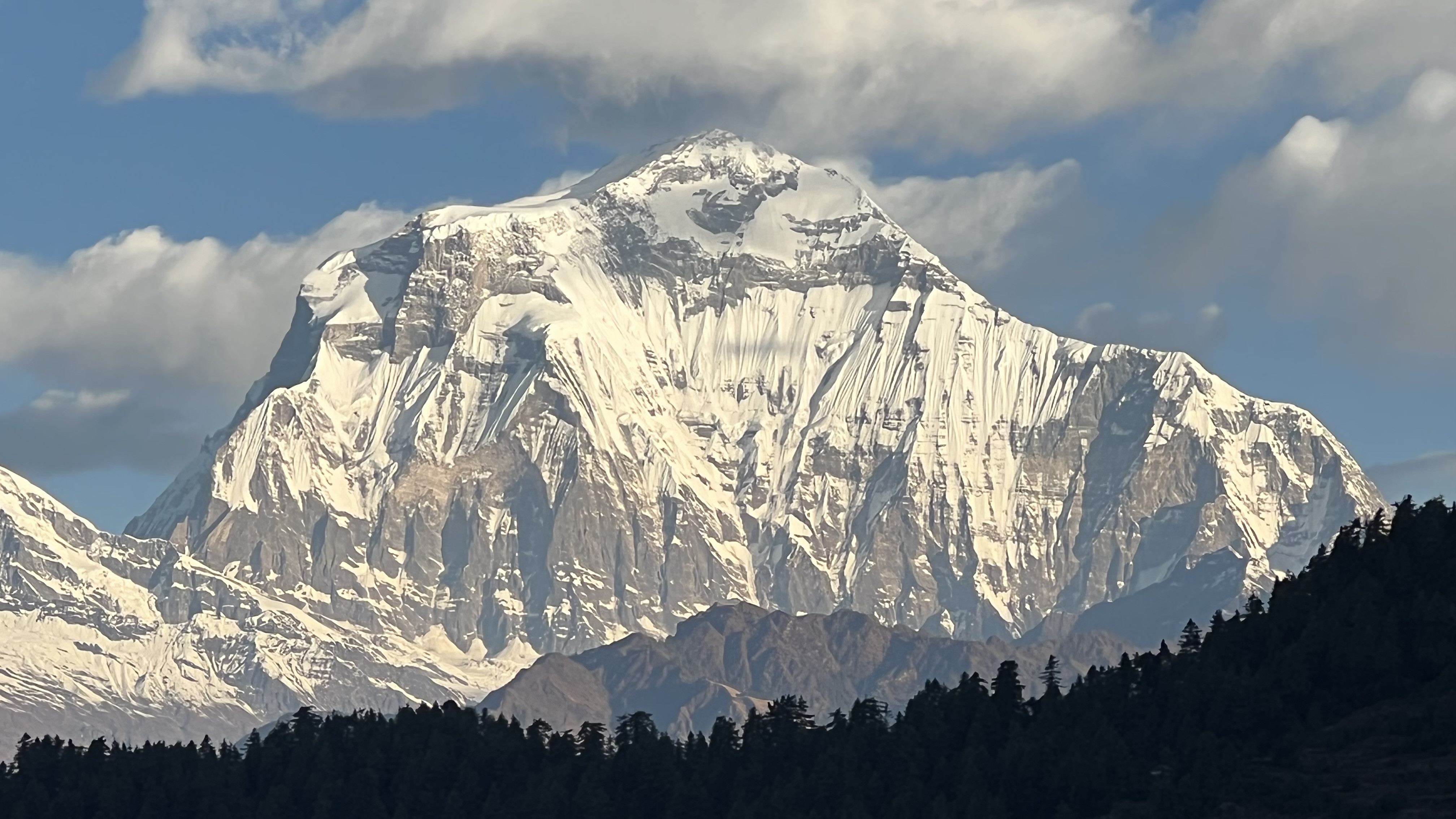
Everest Experience
Everest Experience is a close-encounter mountain flight-seeing tour with Buddha Air. Indulge in the panorama and maybe, just maybe, you might realize what you have been missing, or find what you have been looking for, all this while.
Aft...
Date & Cost
Price: 2,195 per person (Twin Sharing basis)
EXTRA - Internal Airfare: US$ 352 per person (subject to change without notice)
Single Supplement: 275
Include
- Airport (pick up & drop off) transfers by private tourist vehicle
- Twin room sharing accommodation in hotel
- Lodges/Guesthouses accommodation during the trek mostly in twin-share but occasionally in dormitory-style rooms
- Tented camp accommodation and all meals at High Camp (1 or 2 nights only)
- Daily breakfast throughout the trip and other meals as mentioned in the itinerary
- 1 Licenced Climbing Sherpa throughout the trek
- Guided tour in Kathmandu by private tourist vehicle and an English speaking city guide
- Porters to carry your luggage and equipment during the trek
- Food, accommodation, salary, insurance, equipment and medicine for all staff and their return airfares
- National Park entrance permit
- Mera Peak Climbing Permits
- All necessary climbing equipment/Gear
- Kathmandu- Lukla - Kathmandu flight including airport departure tax in Kathmandu and Lukla airport.
- All surface transfer from and to Kathmandu for all sightseeing and excursions
- Sightseeing/Monument entrance fees in Kathmandu
- All our government taxes, vat, tourist service charges
Exclude
- International flight
- Travel insurance
- Visa fee
- Meals not mentioned in the itinerary
- Personal clothing & equipment
- Tips for trip leader/guide, driver, hotel staff and porters
- Items of personal nature such as alcoholic beverages, soft drinks, laundry, showers and other unforeseen expenses
- Items/services not listed in the "included"
- Extra expenses/payment for 'OPTIONAL’ activities/programs if opted in
Accomodation
Gallery
Map
Reviews

Max Bruss
Netherlands
It was a perfect trip to the Mera Peak.
The guide was excellent, he helped us when ever needed. He was certanly part of the succes and spoke verry good English.
I will certanly recommend ttn-Asia/Him-Nat.
Max from the Netherlands
Frequently Asked Questions
era Peak (6,476m) is one of Nepal’s highest trekking peaks, offering breathtaking views of five of the world’s tallest mountains: Everest, Lhotse, Cho Oyu, Makalu, and Kanchenjunga. It is a great choice for adventurers seeking a challenging yet achievable climb with minimal technical requirements.
While Mera Peak is considered a trekking peak, prior experience with high-altitude trekking is highly recommended. Physical fitness and mental preparation are crucial.
The best seasons are:
Spring (March to May): Clear skies and moderate temperatures.
Autumn (September to November): Stable weather and excellent visibility.
Key items include:
Climbing gear: Crampons, ice axe, harness, helmet, and ropes.
Clothing: Layered clothing for extreme cold, including down jackets, thermal layers, gloves, and windproof outerwear.
Footwear: Sturdy trekking boots and insulated climbing boots.
We provide a detailed packing list and can assist with equipment rental if needed.
Yes, comprehensive travel insurance is mandatory. It must cover:
High-altitude trekking (up to 6,500m).
Emergency evacuation by helicopter.
Medical coverage for accidents and illnesses.
Mera Peak is physically demanding but technically straightforward. The main challenges are:
High altitude and thin air.
Long trekking days and steep ascents.
Extreme weather conditions.
Yes, our itinerary includes multiple acclimatization days to ensure a safe and enjoyable climb. Gradual altitude gain helps minimize the risk of Acute Mountain Sickness (AMS).
You need:
Makalu Barun National Park Entry Permit.
Mera Peak Climbing Permit issued by the Nepal Mountaineering Association (NMA).
We handle all permit arrangements for your convenience.
Our guides are trained to recognize and manage symptoms of AMS. Measures include:
Gradual acclimatization.
Monitoring your health regularly.
Using emergency oxygen and evacuations if necessary.
Our guides are trained to recognize and manage symptoms of AMS. Measures include:
Gradual acclimatization.
Monitoring your health regularly.
Using emergency oxygen and evacuations if necessary.
Our guides are trained to recognize and manage symptoms of AMS. Measures include:
Gradual acclimatization.
Monitoring your health regularly.
Using emergency oxygen and evacuations if necessary.
Yes, most nationalities require a visa, which can be obtained on arrival at Kathmandu airport
